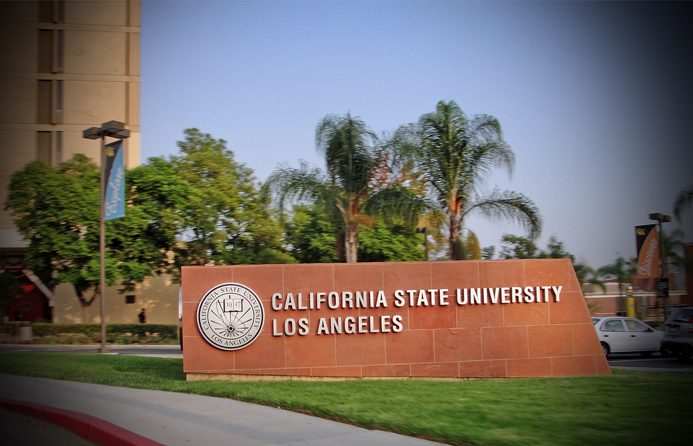DC DISPATCH-With a global pandemic and civil unrest testing the seams of the United States, our higher education system is also experiencing a wave of systemic change.
This change is exemplified by a radical, real-time experiment currently involving the dozens of colleges and schools within California’s prestigious public university system. The "Cal State University" network (CSU) has cancelled on-campus classes for the fall, while the University of California (UC) System will welcome students back to their facilities, albeit cautiously. This means online learning at the undergraduate and postgraduate level better be ready to meet expectations and needs for hundreds of thousands of students this fall.
You can be forgiven for lacking details on each system. CSU is the biggest four-year public university system in the United States, with 23 campuses that welcome approximately 500,000 people per day during the school year. The UC system has about 300,000 students on 10 campuses. Here’s a good New York Times report on the CSU decision.
While the Cal State system has elected to entirely cancel in-person fall classes, UC President Janet Napolitano (former Secretary of Homeland Security under President Obama) has said she anticipates, “most if not all of our campuses will operate in some kind of hybrid mode.” Apparently, this latter approach envisions some combinations of online classes, likely for bigger lecture courses, and in-person instruction for smaller classes or lab work. The decisions still-to-come involve other practical considerations such as dorm openings, no-fans sporting events, and the like. It’s worth noting that, amidst this structural overhaul, CSU is reportedly planning to increase tuition 3.5% for the 2020-2021 academic calendar. This academic year cost increase, outpacing inflation estimates, will hold regardless of whether most classes are conducted online, setting undergrad tuition at $59,260 (an increase of $2,004), according to Annenberg Media, a student-led news service that broke the story.
The California experiment will be significant, but it reflects the dilemmas that universities are facing nationwide as they seek to meet their educational goals while still safeguarding students and faculty. CNN reports “… universities in at least six states have said they expect to hold classes on campuses in the fall: the University of Alabama; the University of North Carolina System; Texas Tech University; the University of Tennessee; the nine-campus University of Louisiana network; and Morgan State University in Maryland. The North Dakota State Board of Higher Education last month voted unanimously in favor of a motion supporting the return of students to campuses in the fall. Harvard said last month it will be open for the fall semester, but some or all instruction may continue to be online.
Here’s the CNN report.
As you may gather, and while it was not part of my personal initial pre-COVID, pre-unrest decision to continue my education (that already seems so very long ago!), I have become a fascinated curator of higher-education narratives. Frankly, I have to admit a certain degree of excitement at being part of the experiment (I’m planning to enter a USC online graduate program this fall) and participating in policy conversations as they evolve.
Re-opening traditional campuses, at least while any level of pandemic threat remains, will inevitably present challenges for universities. As John Kroger, writing at Inside Higher Education, describes: “… as the weather gets colder, universities will experience COVID-19 outbreaks, and many students will head home again. Some parents will sue when their children get sick or die; others will demand refunds or sue because the interrupted education does not meet their expectations. Every withdrawal will be accompanied with a 100 percent refund request. Universities will struggle to deal with all this, particularly because they will have laid off many of the student affairs and financial aid staff members on whom they would ordinarily rely to cope.”
As for online higher education, Mr. Kroger echoes a generally dismal tone for different reasons when he writes “… [now] that most colleges and universities are operating online, university presidents and administrators will want them to stay online. Short term, faculty will go along with this. They understand that institutions will need to offer online classes to maintain social distancing. But when institutions pivot, seeking to transform many of their degree programs into permanent online offerings, expect tenured and tenure-track faculty to raise serious questions and to resist… expect things like ‘the University of Texas, powered by Google.’”
You might wonder at the word “resist.” However, that remains the mindset even in these difficult times. I’ve noted before that the COVID crisis can act as an accelerant for educational changes and the trend has been toward online, even before the health crisis. Actually, one of the leaders of online education, Chip Paucek at Maryland-based 2U Inc. (not coincidentally the platform for my USC program) has predicted that “in the future” all post-graduate degrees will be online degrees.
2U CEO Says Online Education Gets a 'Bad Rap'
However, Mr. Paucek also notes the history of online learning includes consistently “underestimating the power of people” to form their own learning communities and create human contact – a point worth noting as most California Universities, both public and private, accelerate into the great national experiment that is the COVID-crisis educational landscape.
(Sara Corcoran is publisher of the National Courts Monitor and writes for CityWatch, Daily Koz, and other news outlets.)
-cw














